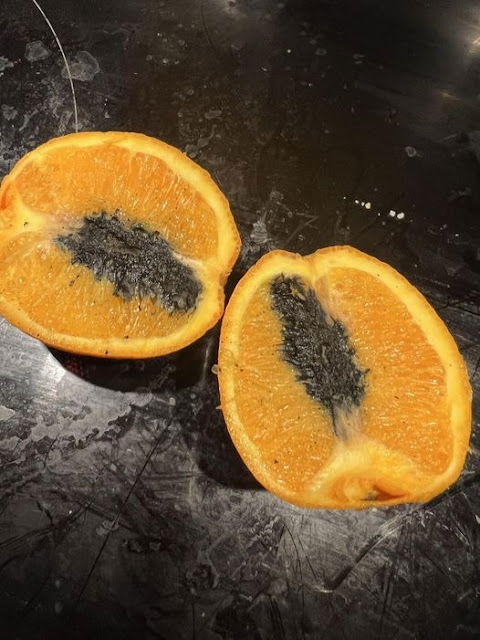Investigating Food Safety: Are Black Spots or Mold on Fruits Something You Should Avoid Eating?
Fruits provide a wide variety of vitamins, minerals, and other substances that are needed to good health. But if you see mold or black spots on fruits, you might be worried they aren’t safe to eat. To help you make an educated dietary choice, this article will discuss the pros and cons of eating fruits that have mold or black spots, as well as any dangers you should be aware of.
Deciphering Mold and Black Spots on Fruits:
Spots like mold and black spots on fruit can be signs of spoiling due to things like bruising, bacterial or fungal development, bad storage, or too much moisture. These telltale indicators of microbial contamination or fruit quality decline may be unattractive, but they are actually quite important.
Are Black Spots on Fruits Dangerous to Consume?
Bananas, apples, and grapes, for example, could have little black spots that are usually harmless and can be cut off before eating. These patches usually appear as a result of ripening processes that occur naturally or small damage that occur during shipping and handling. To reduce the possibility of microbial infection, it is recommended to discard the fruit if the black spots are large or if they are accompanied by a bad odor.
Bananas and other fruits with thick, protective skins frequently have edible meat below that may be revealed by removing the black spots and peeling the fruit. Similarly, if the fruit’s skin is edible, like an apple or a pear, you may save the rest of the fruit by slicing off the damaged parts.

But be careful with berries and stone fruits like peaches and plums since their skins are very sensitive and delicate. These fruits are more likely to have mold on them, and eating moldy fruit can be dangerous for people with weak immune systems.
The Mysteries of Fruit Mold:
As a kind of fungus, mold loves warm, humid conditions and may swiftly spread on fruits, especially those that are very wet. Some molds are completely innocuous, but others can create mycotoxins that can trigger allergic responses or food poisoning in people who aren’t used to them.
It’s crucial to distinguish between surface mold, which shows up as fuzzy spots on the outside of the fruit, and internal mold, which goes all the way into the fruit. To properly remove mold from surfaces, it is generally sufficient to cut away the damaged portions with a clean knife, making sure that no visible mold remains. Nevertheless, to prevent any possible health hazards, it is recommended to throw out the fruit completely if the mold has gone deep into it or if there is a strong musty smell.
ADVICE ON MAKING SURE FOOD IS SAFE:
Throughly examine fruits before to purchase: Fruits should be plump, firm, and unblemished by mold or other evident signs of damage.
How to keep fruits fresh: If you want to keep fruits from going bad, store them in a cool, dry spot that doesn’t get too much sun. To make berries and sliced melons last longer, put them in the fridge.

To reduce the likelihood of infection, practice good hygiene by washing your hands before handling fruits and by using clean utensils and cutting boards.
Eating ripe fruits quickly allows you to savor their full flavor and freshness while minimizing the chances of spoiling or mold growth.
Although fruits with little black spots are usually acceptable to eat, it’s important to be careful and apply common sense when deciding if damaged or moldy fruits are safe to eat. Excessive spoiling or mold development on fruits is a red flag that they may pose a health concern, so it’s better to be safe than sorry and throw them out. Enjoy a wide selection of healthy fruits with little worry of food poisoning by following all applicable food safety regulations and maintaining appropriate personal hygiene.
















